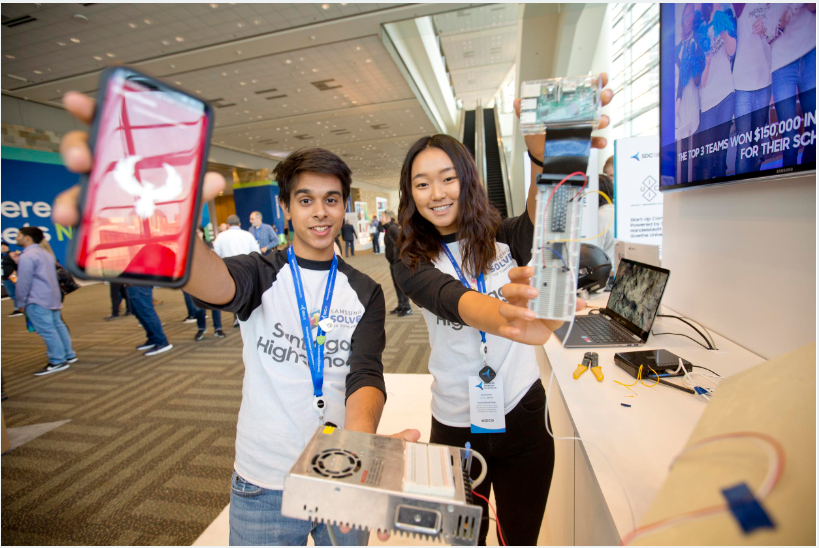Launched in 2010, Samsung Solve for Tomorrow, our nationwide science, technology, engineering, and mathematics (STEM) competition, has evolved from an environmentally focused project to a multi-dimensional, project-based learning initiative that challenges young minds to address some of the most pressing issues in their local communities and society at large. In that 11-year time span, the top social issues tackled by the participating public school students in grades 6-12 have changed – but none as drastically as what we’ve observed for the school year before and after the pandemic hit.

While the 2019-2020 and 2020-2021 cohorts view the environment, accessibility and health as being among their top five priorities, the Generation Zers’ remaining concerns are significantly different. Mental health and personal safety round out the rest of the 2019-2020 cohort’s leading societal problems to solve. By comparison, COVID-19 related matters and social justice topped 2020-2021 cohort’s key issues to take on via real-world, STEM-driven solutions.
“During the course of Samsung Solve for Tomorrow’s eleven-year run, we’ve seen our students unearth emerging challenges of a new decade caused by a number of social, cultural, economic, technological, communal, familial, and individual factors. Their entries are truly a reflection of what is top of mind for classrooms across the country, so it didn’t surprise us that COVID-19 would become a priority. In fact, over the years, we’ve observed a rise in social issues, such as vaping, before they entered national consciousness and have seen other themes, like the environment, remain consistent year after year,” said Ann Woo, Senior Director of Corporate Citizenship at Samsung Electronics America.

Underscoring the difference that just one year can have on their perspective, the two sets of middle and high school students have diverging positions on what the principal social issues are.
- It’s no surprise that COVID-19 was by far the most critical issue for the current school year. Twenty nine percent of the entries were directly linked to the pandemic with solutions devoted to sanitization and social distancing technologies. Social justice also became paramount. Nine percent felt that STEM could help with addressing racism, bias, and discrimination to foster a just society.
- In the last school year, eleven percent of the students examined the link between bullying and the development mental health problems, as well as how conditions such as depression may increase risk for suicide, through a few wellness-based applications. And eight percent identified personal safety as being of great importance, concentrating mainly on the prevalence of human trafficking and school shootings through innovations like a silent alert mechanism to alert authorities and a bullet-resistant desk to serve as a protective shield, respectively.

Diving deeper into the remaining social issues, while the two Solve for Tomorrow cohorts have similarities, the underlying focal points vary.
- Thirteen percent of middle and high school students in the last school year felt an unprecedented urgency around the environment with a strong emphasis on plastic waste and air pollution versus twelve percent of students in the current school year, who zeroed in on climate change.
- Accessibility was top of mind with ten percent of the previous cohort, who developed assistive technology for individuals with visual and mobility impairments, but nine percent of the current cohort harnessed tech to help the elderly fight social isolation and live more independently.
- Fully aware that vaping may pose serious and avoidable health risks, ten percent of 2019-2020 youth in the last school year used STEM to devise a solution. On the other hand, food Insecurity and screen time – inevitably spurred by the pandemic – were at the heart of twelve percent of this year’s student projects.
Learn more about students’ STEM-based projects by checking out the five winners and 20 national finalists of the 2019-2020 competition, as well as the 75 semi-finalists for the current 2020-2021 contest.
Woo added, “The Samsung Solve for Tomorrow initiative has become the voice of the next generation, directly and authentically expressing to us what matters most. Our analysis of the entries reveals that there are a number of social issues facing teens today that other generations haven’t had to deal with. But what strikes us about this latest Gen Z cohort is their passion for exploring new ideas, their willingness to rise to the challenge to tackle big issues, and their vision for what the world should look like. And STEM is playing a central role in this bold movement.”
Members of Generation Z are weathering a pandemic, a recession, a climate crisis, and a racial reckoning – all before reaching adulthood. Rather than succumbing to the pressure, the Samsung Solve for Tomorrow students are showing their resilience and ingenuity by harnessing STEM to confront these salient issues head-on. This serves to reaffirm the significance of STEM education to encourage curiosity, instill empathy, teach creativity, and unleash innovation.







